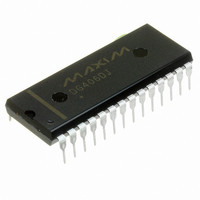MAX1480BEPI Maxim Integrated Products, MAX1480BEPI Datasheet - Page 20

MAX1480BEPI
Manufacturer Part Number
MAX1480BEPI
Description
IC RS485/RS422 DATA INTRFC 28DIP
Manufacturer
Maxim Integrated Products
Type
Transceiverr
Datasheet
1.MAX1490BCPG.pdf
(21 pages)
Specifications of MAX1480BEPI
Number Of Drivers/receivers
1/1
Protocol
RS422, RS485
Voltage - Supply
4.5 V ~ 5.5 V
Mounting Type
Through Hole
Package / Case
28-DIP (0.600", 15.24mm)
Lead Free Status / RoHS Status
Contains lead / RoHS non-compliant
Available stocks
Company
Part Number
Manufacturer
Quantity
Price
Company:
Part Number:
MAX1480BEPI
Manufacturer:
MAXIM
Quantity:
2 035
Part Number:
MAX1480BEPI
Manufacturer:
MAIXM
Quantity:
20 000
Company:
Part Number:
MAX1480BEPI+
Manufacturer:
ZARLINK
Quantity:
1 359
The RS-422/RS-485 standard is specified for cable
lengths up to 4000 feet. When approaching or exceed-
ing the specified maximum cable length, a ground-
potential difference of several tens of volts can easily
develop. This difference can be either DC, AC, at
power-line frequency, or any imaginable noise or
impulse waveform. It is typically very low impedance so
that if a connection between the two grounds is
attempted, very large currents may flow. These cur-
rents are by their nature unstable and unpredictable. In
addition, they may cause noise to be injected into sen-
sitive instrumentation and, in severe cases, might actu-
ally cause physical damage to such equipment.
Figure 15 shows a half-duplex (two-wire), bidirectional,
party-line repeater system that prevents interference
and/or damage from ground-potential differences. Two
MAX1480A/MAX1480B/MAX1480C isolated RS-485
transceivers are used to isolate each of the network
segments from the electrical environment of the
repeater. The MAX1480A/MAX1480B/MAX1480C also
regenerate bus signals that may have been degraded
by line attenuation or dispersion.
Complete, Isolated RS-485/RS-422
Data Interface
20
______________________________________________________________________________________
Doubly Isolated RS-485 Repeater
In the idle state, both transmitters are disabled, while all
receivers in the system are enabled. If any device on
the system has information for any other device, it starts
sending its data onto the bus. Each data transmission
on the bus retriggers the one-shot, keeping the sending
transmitter enabled until there are no more transmis-
sions. All receivers receive all data; if this is undesir-
able, the protocol must allow for an address field so
receivers can ignore data not directed to them.
Each node must refrain from transmitting when data
already exists on the bus, and must resend data that is
corrupted by the collisions that inevitably occur with a
party-line system. With the repeater of Figure 15, there
might be transmitters up to 8000 feet apart. That repre-
sents more than 8µs (assuming 1ns/foot of delay) in
which two nodes could be transmitting simultaneously.
The circuit in Figure 15 can be used either directly as
shown, with the slew-rate-limited MAX1480B/MAX1480C,
for data transfer rates up to 250kbps, or with the
MAX1480A for data rates up to 2.5Mbps (see Table 1
for pullup and LED resistor values when using the
MAX1480A, MAX1480B, or MAX1480C). If dual-port iso-
lation is not needed, one of the MAX1480C devices can
be replaced by a MAX487 for 250kbps applications.












